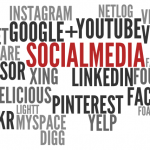I spent this last week teaching a workshop on social media for learning at Arizona K12 Center's Camp Plug and Play event. We approached the topic from the perspective of personalized professional development and an integrated aspect of project based learning.
On the first day, I asked people what the barriers were to using social media in the classroom. They mentioned time, lack of know-how and a general sense of irrelevance. A few of them suggested that social media was a waste of time when "real" learning needed to happen.
However, those concerns slowly shifted as we engaged on social media. Suddenly, the time factor wasn't as big of an issue, the know-how took care of itself and participants saw the platforms as relevant and useful.
Two new barriers emerged. The first was the testing culture. Social media everything that a standardized test isn't: relevant, social, interactive, personalized and connective. Teachers weren't worried so much that social media would lead to low test scores, but that the pressure to pass the test would leave them abandoning the PBL framework we had used in a push for a more I do – we do – you do framework.
The second barrier was access. I found teachers calling their tech coordinators and begging for sites to be unblocked, making statements like, "Yes, but we still have a cafeteria even when bullying happens there."
So, we quickly moved from personal to policy barriers. And that's why teachers need to be outspoken about bad policies. If the system keeps them away from potential platforms for student learning, then they have every right to be irate and to lobby hard to change the system.
It used to be that the digital divide was one of money. Schools couldn't afford technology. Now we're seeing that the real digital divide that keeps us away from social media platforms is a series of fear-based policies. This is why we, as teachers, need to use social media appropriately in order to prove that these platforms are a necessary part of student learning.








